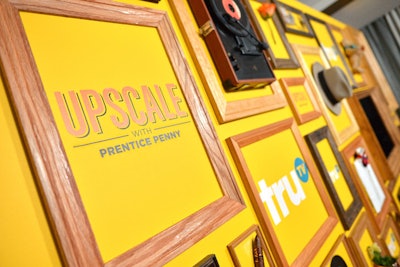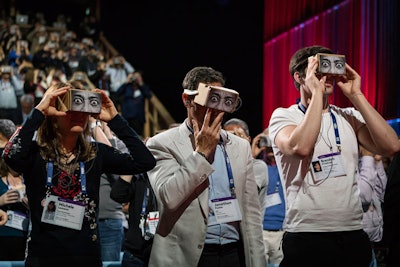
During a talk by Chris Milk, C.E.O. of virtual reality company Vrse, a Google Cardboard viewer and headphones sat on every chair in the theater. Attendees were invited to download his latest virtual reality film and watch it together as he spoke.
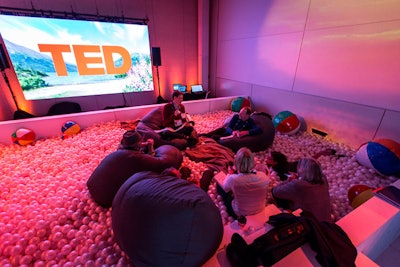
Each year organizers create a variety of lounges where attendees can watch a simulcast of speakers. New this year was a ball pit filled with beanbag chairs and beach balls.

Sponsor Delta Air Lines created an immersive installation to introduce its new collaborative research center dubbed the Hangar. Inside the space, 6,000 LED lights simulated a star-filled sky. Attendees could climb throughout the dream-like environment and then submit innovative ideas for Delta to explore.
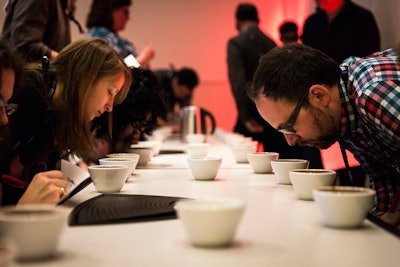
TED invites baristas from around the world to set up coffee stations at the conference. In a workshop hosted by the Specialty Coffee Association of America, attendees also learned about “coffee cupping,” the practice of observing the taste and aroma of brewed coffee.
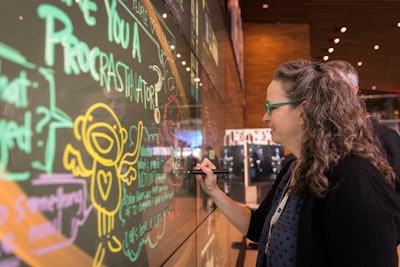
Sponsor Bluescape demonstrated its visual collaborative software by erecting several multi-touch video walls around the conference. On the walls, attendees could read about conference activities and speaker content and bios, watch live streams of presentations, and contribute comments. Attendees could also access Bluescape using a Web browser.
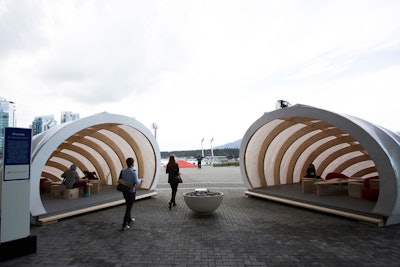
Vancouver architect and past TED speaker Michael Green worked with local design students to create two 16- by 30-foot “warming huts” where attendees could gather outside the convention center. Following the conference, the huts will be permanently installed in one of British Columbia’s outdoor recreation sites so they can be used by climbers, skiers, and outdoor enthusiasts.
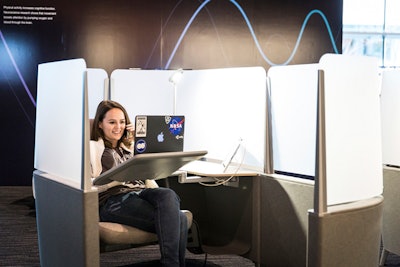
Steelcase, a TED partner for more than 20 years, provided a variety of seating options throughout the convention center. The company’s personal cubicles provided a semiprivate area where attendees could watch the simulcast and do work.
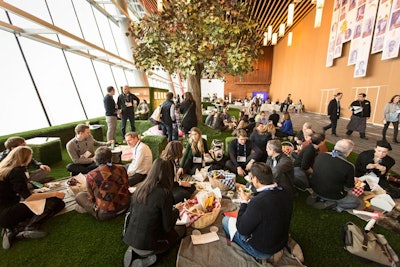
To encourage attendees to mingle, organizers provided blankets and picnic baskets filled with food for six and invited them to find others to share it.
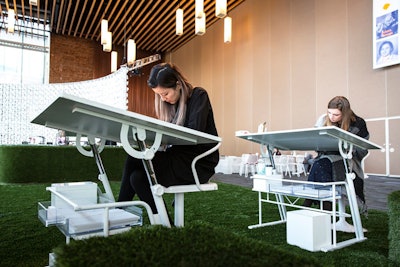
Sponsor Target provided illustrators who created unique pieces of art based on guests’ descriptions of their hopes and dreams.
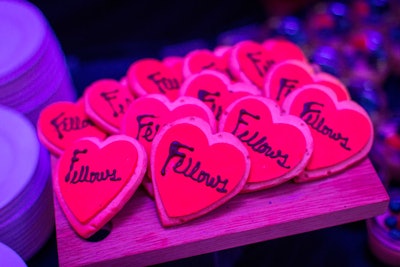
Heart-shaped cookies were an appropriate dessert at a reception for the 21 TED Fellows on Valentine’s Day, the day before the conference opened.
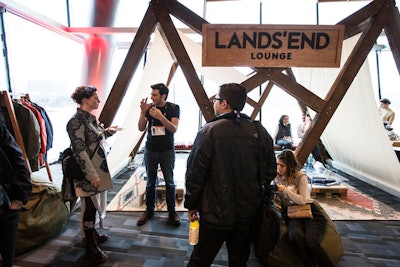
Sponsor Lands’ End created a lounge where attendees could learn about its Sport Collection. The company also provided large totes that served as the conference gift bag.
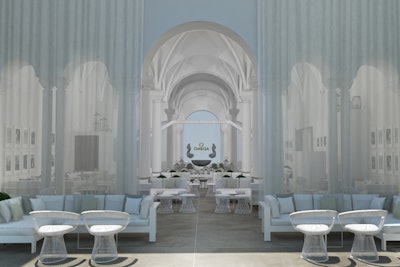
First launched for the 2012 Olympics in London, Omega's exclusive members-only club returned for Rio 2016. Omega's activation was housed at the Casa de Cultura Laura Alvim on Ipanema Beach, with each individual room paying homage to the Olympics. The main area for guests to mingle was the patio, which featured a white-on-white scheme reminiscent of luxury destinations like Miami, Ibiza, and Mykonos. The white was offset by black-and-white photos highlighting the brand's history of timekeeping.
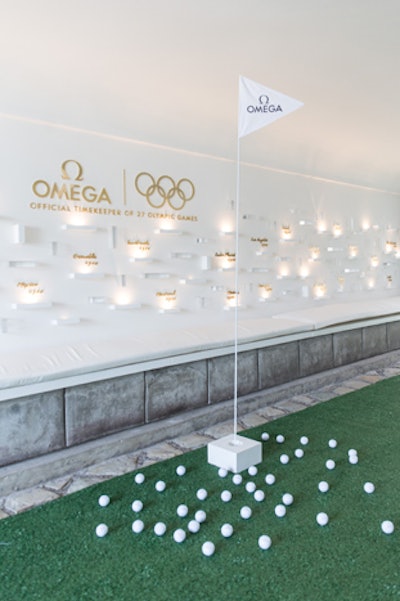
The house hosted a variety of invite-only events, including the Omega Golf Ball on August 8, celebrating the return of golf to the Olympic Games after a 112-year absence. The event featured a green carpet with a golf ball display that served as a photo op.
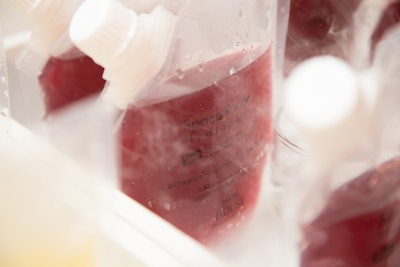
Another notable Omega House event was "Cocktails in Space" on August 10, which featured an appearance by astronaut and Omega ambassador Buzz Aldrin. The event featured cocktails served in space ration hydropacks made with Tang, a drink that astronauts actually took to space.
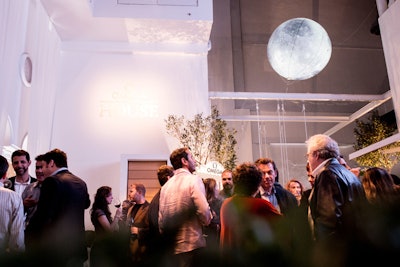
The event paid homage to space exploration with decor that included a luminescent moon.
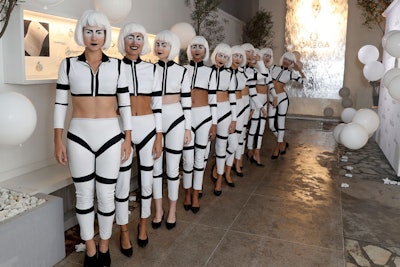
The event also feature white-haired "space girls" who served cocktails and greeted guests as they arrived.
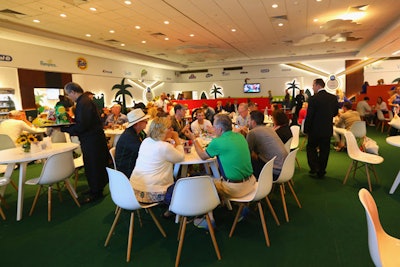
Olympic partner Procter & Gamble opened its Family Home for athletes and families through the duration of the Games. P&G brands including CoverGirl, Aussie, Pantene, Gillette, and Tide offered beauty and grooming treatments for guests. The "home away from home" also featured experiences including an appearance by Tide Pods ambassador and Olympic Gold medalist Nadia Comaneci.
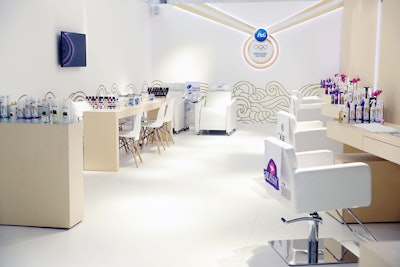
The company activated a pop-up spa in the Olympic Village for athletes and families. Services from a variety of P&G brands included haircuts and shaves, styling, makeup stations, and manicures and pedicures.
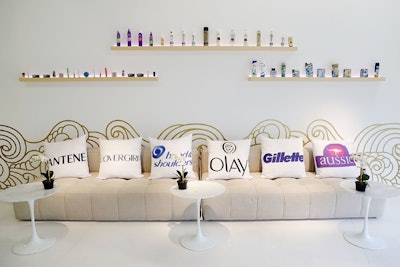
Decor in the lounge, which promoted rest and relaxation, included product displays and branded pillows.
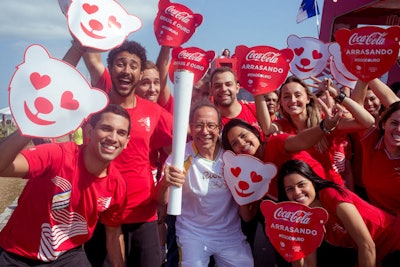
Experiential marketing company Ignition produced numerous activations for Coca-Cola, including the Olympic Torch Relay, which the soft drink brand has sponsored since 1996. Branded trucks blared music, and brand ambassadors with Coca-Cola shirts and polar-bear mascot cutouts served as cheerleaders for torchbearers.
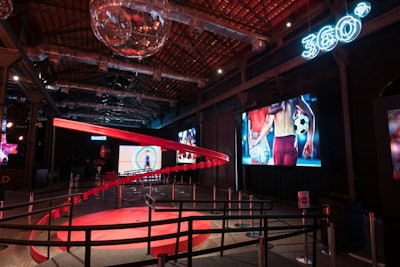
The experience, which translates to "Coca-Cola Station," was geared toward teenagers and housed in a former warehouse in the downtown Praça Mauá neighborhood through August 21. Interactive experiences for guests included a 360-degree photo booth in which fans could pose with the Olympic torch.
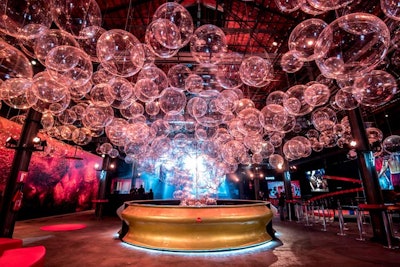
The ceiling installation design was inspired by a burst of bubbles exploding from a Coca-Cola bottle. The installation lit up in gold whenever athletes won a gold medal during the Games.
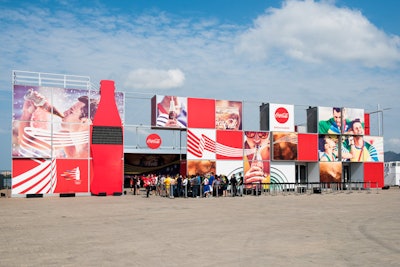
The brand's Olympic Park activation included a pin trading and retail experience, photo ops with the Olympic torch, and highlights of the brand's longstanding partnership with the Games.
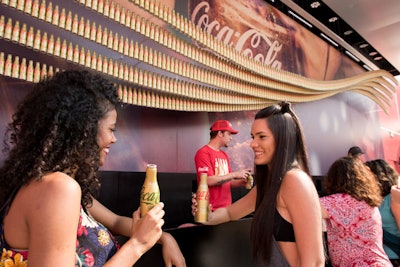
The activation's decor included a wall of Coca-Cola's commemorative gold aluminum bottles.
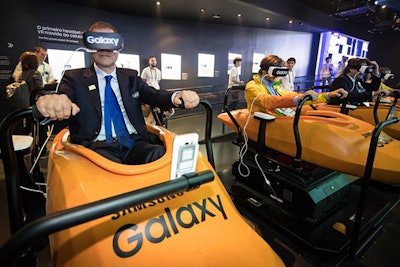
Samsung showcased its Galaxy Studio from August 6 through the duration of the Games in Olympic Park. The experience gave fans a chance to demo the brand's latest products and test out interactive experiences including a 4-D kayaking virtual reality experience.
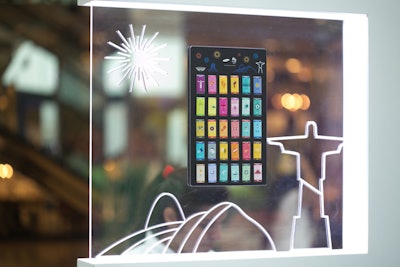
The studio also gave fans of pin-collecting a chance to celebrate the Olympic spirit with its Rio 2016 pin promotion. The promotion included 22 Olympic sport-theme pins and eight Rio-theme pins, as well as a decorated pin board. Guests could earn pins by completing a variety of interactive stations in the studio. A fan who collected all 30 pins and the pin board was eligible to win a round-trip package to Tokyo, which will host the Olympics in 2020.
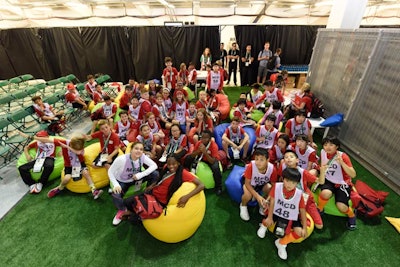
Olympic partner McDonald's gave 100 kids from 20 countries the opportunity to walk in the Parade of Nations during the opening ceremony at Maracaña Stadium on August 5. Kids walked with flag bearers from each of the 207 delegations.

Visa's members-only lounge was open for the duration of the games at the Windsor Atlantica Hotel in Copacabana. The lounge featured a Rio-theme branded wall decorated with colorful flip-flops for sale.
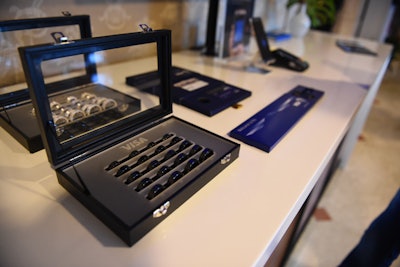
The lounge also featured an area that showcased Visa's payment ring, the brand's newest innovation that was announced in June. The payment rings, which are enabled by near field communication, were given to all Team Visa athletes to use during the Games.
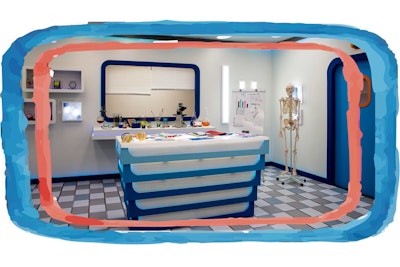
As part of its nostalgic Olympic campaign, GE of Brazil launched an interactive web series that starred the actors behind Tíbio and Perônio—two fictional scientists from Castelo Rá-Tim-Bum, a popular Brazilian children's TV show from the '90s. The two characters, which were filmed at the GE Research Center labs in Rio de Janeiro, explained infrastructure solutions developed by GE for the Games. The series premiered August 8 and was broadcast in 360 degrees, allowing the audience to interact with content in the lab that included original set design elements. The campaign, which was created by VaynerMedia in partnership with New Vegas, was Webcast by GE on Brazil's social channels.
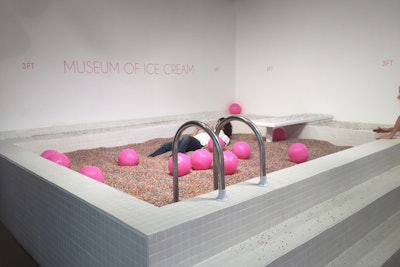
The Museum of Ice Cream pop-up, a project from creative strategist Maryellis Bunn and Lightbox founder Manish Vora, is on display through August 31 across from the Whitney Museum of American Art in New York. The homage to ice cream has numerous installations, including a pool of fake sprinkles produced by Vance Garrett Productions.
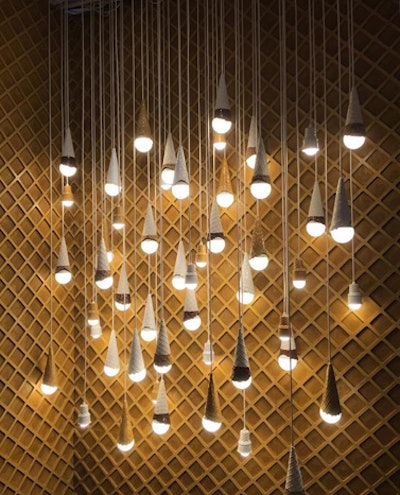
Other installations included hanging ice cream cone lightbulbs with a waffle cone pattern backdrop.
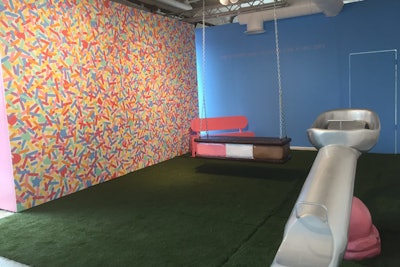
Tinder sponsored an ice cream-theme playground, which included an ice cream scoop seesaw, a Neapolitan ice cream sandwich swing, and a colorful sprinkle illustration wall.
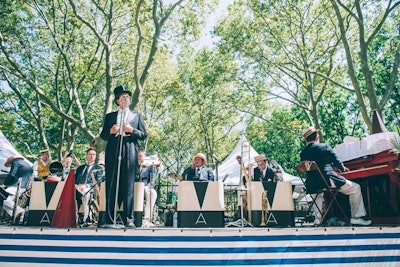
The 11th annual Jazz Age Lawn Party, sponsored by St-Germain liqueur, took place August 13 to 14 at Governors Island in New York. The event, which was produced by Tina Wright, featured a 1920s-theme stage designed by Arenella Productions.
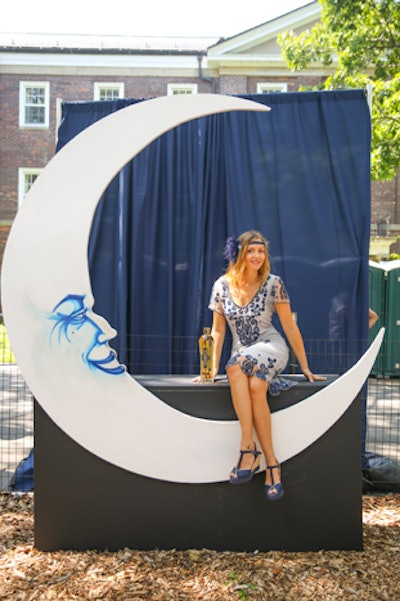
The event featured crescent moon photo booths designed by Michael Arenella.
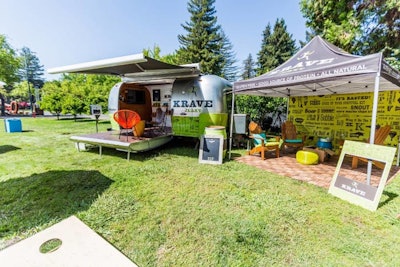
Artisanal jerky brand Krave launched an Olympics-inspired campaign in May, promoting its jerky on a mobile tour from a branded Airstream lounge. Conceptualized and produced by GoodDog, the sister agency of LeadDog Marketing Group, the lounge has stopped at music and culinary festivals on the West Coast. The tour's last stops will be at Bumbershoot festival in Seattle on September 5 to 7, and the Kaaboo Del Mar festival in San Diego on September 16 to 18.
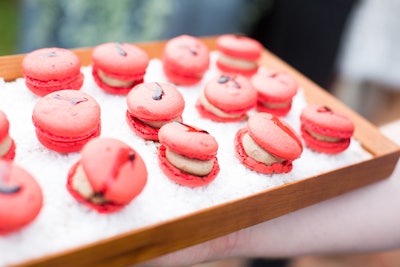
All Star Code, a nonprofit that prepares young men for full-time employment in the tech industry, hosted its third annual summer benefit at a private residence on August 6 in East Hampton, New York. The event, which was catered by Red Rooster Harlem, featured eye-catching "Lucky Macarons" made with duck liver and aged balsamic vinegar.
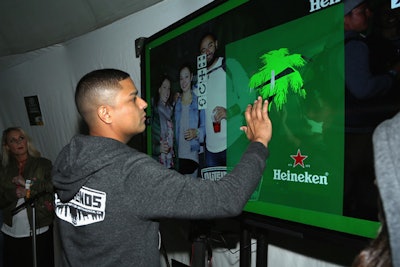
The ninth annual Outside Lands music festival took place August 5 to 7 at Golden Gate Park in San Francisco. The Heineken House activation, created by Heineken and the Corso Agency, offered a digital graffiti wall with shareable photo experiences for consumers. Guests posed for a picture and then "tagged" the image with logos and stencils. Pictures could be sent via email, printed, or shared over social channels.
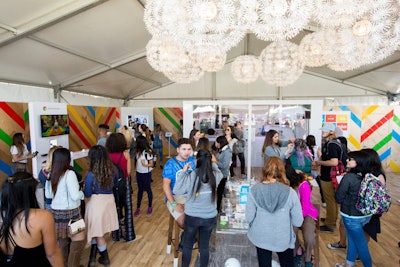
Google Chromecast's Castland, created in a partnership with Grow Marketing, offered a living-room environment where a Chromecast Audio demo was integrated into the GIF experience, which includes audio-reactive lighting and music by festival artists.
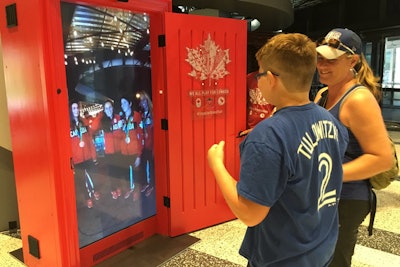
Canadian Tire's "Red Door to Rio" activation enables real-time communications between Canada's Olympic athletes in Rio and their fans in the Toronto area. The activation, which debuted at the Canadian Broadcasting Centre on August 8, was produced by WonderMakr and features two doors made of Canadian pine.
